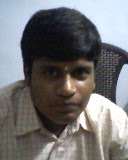Question:
I've had long episodes of backache, and now that I have a desk-bound job, it's often very painful and is affecting my sleep. There are two main areas: my lower back- I've been told my pelvis and hips are dislocated - and between my shoulder blades. I also have pain in my right shoulder.
Answer:
Most backaches and pain are muscular rather than skeletal in origin. Homo sapiens inherited back trouble because our ancestors started to walk upright. If you look at the spine, all the weight of the organs is in the front. Because of this, the body tends to fall forward so the back muscles act like the ropes of a pulley, to keep us erect, (Think you always fall forwards when you faint.) If your posture changes and you stoop forwards - due to a desk job, lots of forward-bending work (eg, lifting) or exercises such as sit-ups and rowing '“the spinal muscles will be overstrained.
Animals have their body weight supported horizontally by the spine. Their vertebrae are thicker and bigger towards the neck and shoulder area to support the heavy head. In humans, the lumbar vertebrae in the lower spine are broader and tougher than those in the neck because our vertical weight must be supported by vertebrae and cushioned by discs (which also become thicker going downthe spine).
Two problems can cause the discs to become painful. They become compressed and pinched vertically, due to weight and gravitational force, or, more commonly, squeezed laterally so they bulge out sideways - mostly in one direction so you get one sided pain. lf you put a round hot-water bottle - the disc - between two square or round blocks of wood -the vertebrae - and twist them in opposite directions, the water bottle will twist too and bulge in one place (discs rarely bulge in both directions, causing bilateral pain).
The old-fashioned treatment for back pain was traction, which attempted to release vertically compressed discs - but since these were uncommon, it didn't work well. Osteopaths and chiropractors were more successful because they corrected lateral torsion (twisting) by manipulating sideways. In my experience, lateral spinal problems are caused by tightness of muscles in the corresponding area. The logic is that only muscular spasm or tightness on one side, due to repetitive strain or posture, can causethe spine to twist or the face joints to dislocate or misalign, which both cause pain. Groin injuries (due to repetitive movements in one direction, as in golf or squash, or carrying with one hand), abdominal muscle strains, or strains or injuries in the upper thigh muscles and tendons makethe spine twist in one direction as the body tries to find a comfortable position. This changes the posture and creates the torsion that causes the lumbar discs to bulge. Moreover,the spine bends forward as the body tries to minimise discomfort, so the person strains the 'pulley system' muscles in the lumbar back, the buttocks and the hamstrings at the back ol the thighs. The more you bend forward, the harder they have to work and the tighter and more uncomfortable they become.
My findings are written up in Dr Ali's Ultimate Back Book. Most back problems can be treated - surgery is necessary in very few cases. I'm not sure what you mean by a dislocated pelvis but I recommend osteopathy, plus acupuncture for your shoulder.
You should also try the following
Diet
* Avoid acid-forming foods such as citrus fruits, pineapples, mangoes, rhubarb, vinegar, nuts, chillies, white wine, champagne and brandy. Excess stomach acid leads to indigestion and heartburn, and increases aches and pains; muscle tendons become sore and more prone to injuries.
* Drink 1.5 to 2 litres of still water daily and avoid coffee, alcohol and excess salt as they dehydrate the body. Dehydration causes muscle spasm and pain in the kidney areas,
* Lose excess weight: my new Weight Loss DVD gives you dietary advice, massage and exercises which will also help your back.
Yoga
Therapeutic iyengar yoga will help you, particularly these postures: embryo, supine twist, locust, cobra and downward dog. See my book Therapeutic Yoga co-written with Jiwan Brar. Find a qualified yoga teacher locally.
Massage
Get a friend or sports massage therapist to massage the muscles of the entire spine, the buttocks and hamstrings (back of thighs), focusing on the side that hurts. Also massage your right arm and shoulder with Joint oil.
For further information
About back pain and other related problems write mail to.


No comments:
Post a Comment